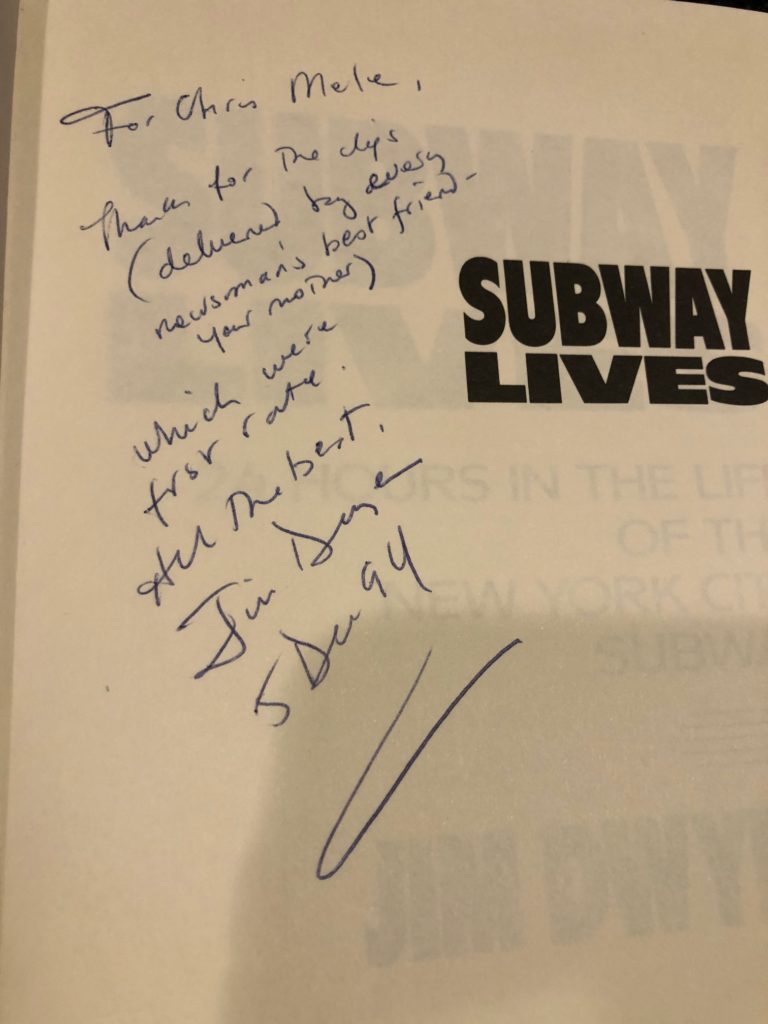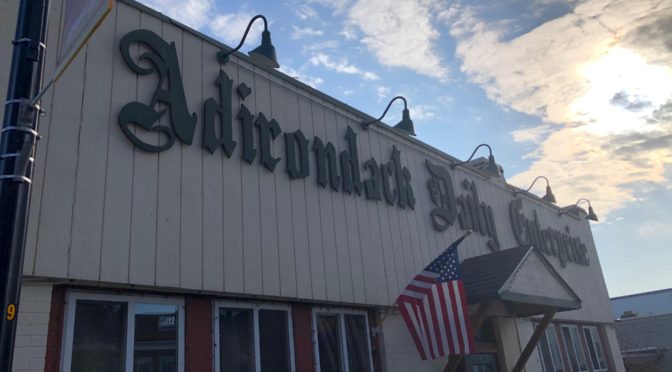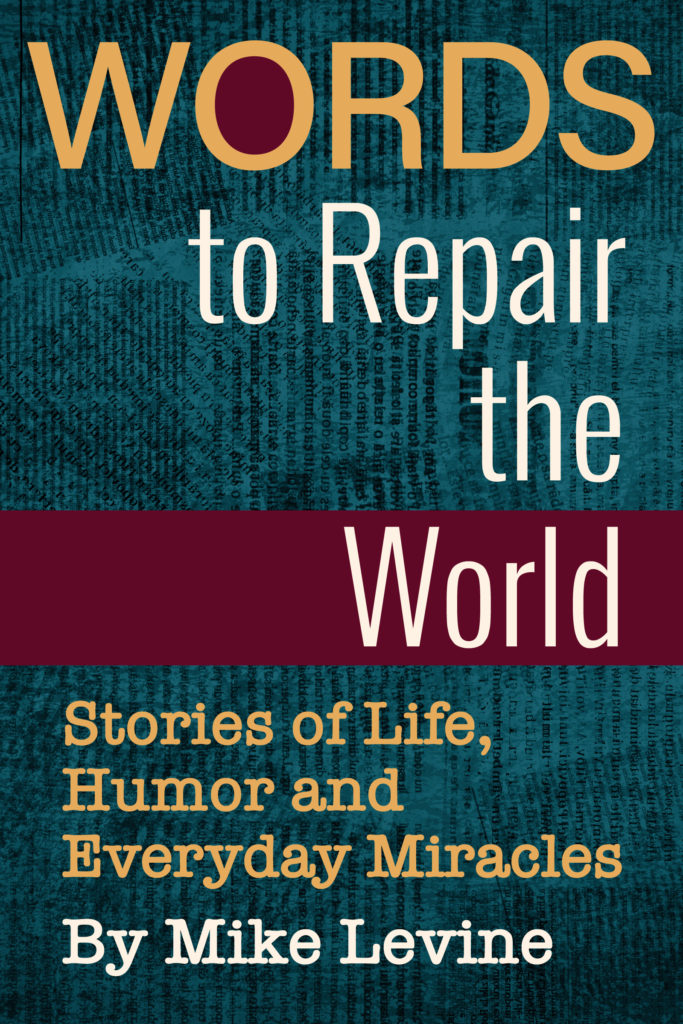A story about Jim Dwyer, The New York Times columnist and reporter, who died today:
When Jim Dwyer’s book “Subway Lives” came out in 1991, I was five years into my journalism career but a longtime admirer of Jim’s work.
As a kid who grew up in the Bronx in the 70s and 80s and rode the trains constantly, I had a special interest in his behind-the-scenes stories of the workings of the city’s mass transit system.
I was spellbound by Jim’s deep reporting, exquisite attention to detail and, of course, his writing.
As fate would have it, Jim’s aunt and my mom were friends in the Parkchester neighborhood of the Bronx. Mom would regularly see my clips because her beloved butcher in the Bronx lived in the Hudson Valley where I worked and regularly cut out my articles to bring to her.
Mom arranged to hand off a sample of my clips to Jim and asked him to autograph the book, which he did:
“For Chris Mele, thanks for the clips (delivered by every newsman’s best friend — your mother) which were first rate. All the best, Jim Dwyer. 5 Dec. 94”

Fast-forward to 2000, and my first marriage disintegrated. Lost in the shuffle of the recriminations of divorce was my cherished autographed copy of Jim’s book.
But fate intervened a second time.
A colleague at the Middletown, N.Y., newsroom where I worked one day visited the local used book store run by the library. He happened to pluck a copy of “Subway Lives” from the shelves and took it home.
My colleague spotted the inscription and asked whether I had once owned an autographed copy of the book. I was reunited with it and it has had a special place on my bookshelf ever since.
As if that were not enough, fate intervened one more time.
I somehow convinced The New York Times to hire me in 2014, and I’m assigned to the Metro copy desk, where — you guessed it — I was occasionally asked to copy-edit Jim’s columns.
To say I felt I was not fit to hold Jim’s notepad would be an understatement.
But for someone who was as accomplished and well-known as Jim, there was not an ounce of airs and graces to him.
He was funny and generous. He was always a gentleman and a pleasure to work with, even though he always tested the outer limits of print deadlines and was lousy with the spellings of proper names. (Sorry, Jim.)
In 2013, a year before I joined The Times and before I met Jim in real life, I saw “Lucky Guy” on Broadway.
The production told the story of Mike McAlary, the celebrated cop reporter for New York Newsday, who died at 41.
Jim was a featured character in the show and I emailed him after to say how much I enjoyed the production and how much I enjoyed working at New York Newsday as a college intern.
Jim, ever gracious again, wrote me — a total stranger — a long note, part of which read:
“I think every journo at middle age, or approaching it, ought to see Lucky Guy. There are a few scenes in there that will make them all realize what lucky guys we are.”
I was the lucky guy for having worked and learned from the likes of Jim Dwyer.
Rest in peace.












